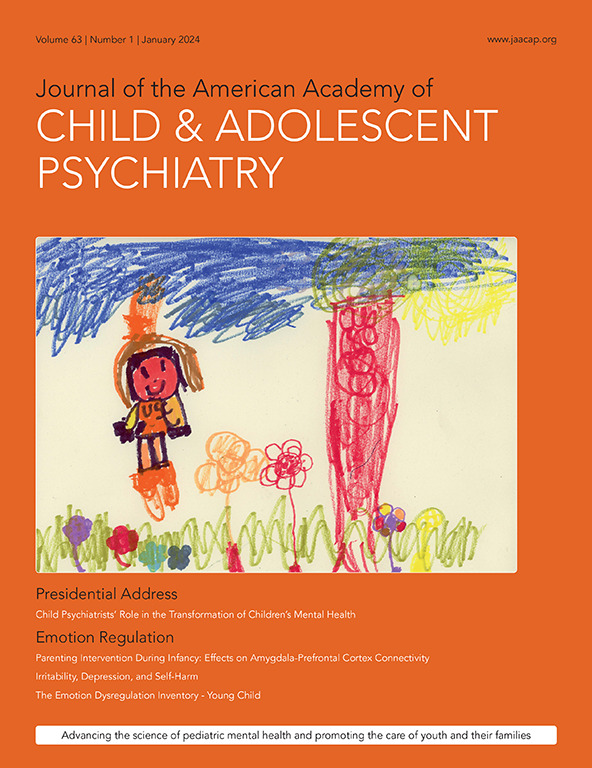Associations Between a Genetic Liability Toward Externalizing and Behavioral Outcomes Spanning Toddlerhood Through Early Adulthood in Five Developmental Cohorts.
IF 9.5
1区 医学
Q1 PEDIATRICS
Journal of the American Academy of Child and Adolescent Psychiatry
Pub Date : 2025-04-23
DOI:10.1016/j.jaac.2025.04.010
引用次数: 0
Abstract
OBJECTIVE Understanding how genetic risk unfolds across development will be important for using genetics to inform prevention and early intervention. The current study leverages information from five large datasets to characterize behavioral manifestations of a genetic liability toward externalizing from ages 6 months- 26 years. METHOD We used polygenic scores (PGS) derived from a multivariate GWAS of Externalizing that identified hundreds of significantly associated genetic variants (EXTPGS) to estimate associations of genetic liability with relevant phenotypes within and across developmental periods, ranging from toddlerhood to early adulthood. We used data from five population- and family-based datasets spanning three countries. RESULTS The EXTPGS was significantly associated with a breadth of externalizing phenotypes from toddlerhood to early adulthood. Higher EXTPGS was consistently associated with measures of impulsivity from early adolescence to early adulthood. Individuals with higher EXTPGS were more likely to experience conduct problems and symptoms of oppositional defiant and attention-deficit/hyperactivity disorders. Further, the EXTPGS was associated with higher levels of substance use and problems beginning in early adolescence through early adulthood, including alcohol and other illicit drug use. There was minimal evidence for sex interactions. CONCLUSION A genetic liability toward externalizing is associated a wide array of behaviors and psychiatric/substance use outcomes beginning as early as childhood and through emerging adulthood. The early emergence and breadth of behaviors associated with a genetic liability toward externalizing could inform prevention and intervention.在五个发育队列中,外化的遗传倾向与幼儿期到成年早期的行为结果之间的关系。
目的了解遗传风险如何在整个发育过程中展开,对于利用遗传学为预防和早期干预提供信息具有重要意义。目前的研究利用了来自五个大型数据集的信息,以表征6个月至26岁的外化遗传倾向的行为表现。方法:我们使用了多基因评分(PGS),该评分来源于外化的多变量GWAS,确定了数百个显著相关的遗传变异(EXTPGS),以估计遗传倾向与从幼儿期到成年早期发育期间相关表型的关联。我们使用了来自三个国家的五个基于人口和家庭的数据集的数据。结果:从幼儿期到成年早期,EXTPGS与外化表型的宽度显著相关。从青春期早期到成年早期,较高的EXTPGS一直与冲动的测量相关联。具有较高EXTPGS的个体更有可能经历行为问题和对立违抗和注意缺陷/多动障碍的症状。此外,从青春期早期到成年早期,EXTPGS与较高水平的物质使用和问题有关,包括酒精和其他非法药物的使用。性行为的证据很少。结论外化倾向的遗传倾向与一系列行为和精神病学/药物使用结果有关,这些行为和结果早在儿童时期就开始了,一直持续到成年初期。与外化遗传倾向相关的行为的早期出现和广度可以为预防和干预提供信息。
本文章由计算机程序翻译,如有差异,请以英文原文为准。
求助全文
约1分钟内获得全文
求助全文
来源期刊
CiteScore
21.00
自引率
1.50%
发文量
1383
审稿时长
53 days
期刊介绍:
The Journal of the American Academy of Child & Adolescent Psychiatry (JAACAP) is dedicated to advancing the field of child and adolescent psychiatry through the publication of original research and papers of theoretical, scientific, and clinical significance. Our primary focus is on the mental health of children, adolescents, and families.
We welcome unpublished manuscripts that explore various perspectives, ranging from genetic, epidemiological, neurobiological, and psychopathological research, to cognitive, behavioral, psychodynamic, and other psychotherapeutic investigations. We also encourage submissions that delve into parent-child, interpersonal, and family research, as well as clinical and empirical studies conducted in inpatient, outpatient, consultation-liaison, and school-based settings.
In addition to publishing research, we aim to promote the well-being of children and families by featuring scholarly papers on topics such as health policy, legislation, advocacy, culture, society, and service provision in relation to mental health.
At JAACAP, we strive to foster collaboration and dialogue among researchers, clinicians, and policy-makers in order to enhance our understanding and approach to child and adolescent mental health.

 求助内容:
求助内容: 应助结果提醒方式:
应助结果提醒方式:


